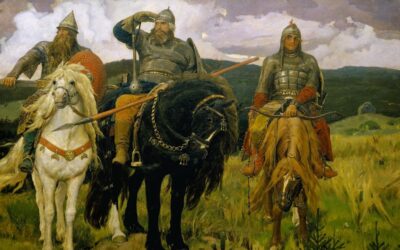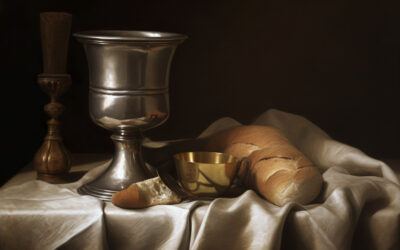For Good Friday, I am sharing a poem written by my daughter, Elizabeth Sunshine Koroma. It’s my favorite Good Friday poem and I think it is particularly impressive that she wrote it while in college. I’m including her explanation of some of the imagery from a blog post she did back in 2011.
The Weeping Sky
The icy, grasping hands of fog
Grip every barren, gnarled tree.
Their shadows in a stagnant pool
Like iron bars encompass me
The fog surrounds my breaking heart,
Veils even Heaven’s constant light.
My eyes turn back to Earth below,
Where what is true cannot be right.Now Goodness dies by Hate betrayed,
So every cloud in heaven weeps,
Descending to a muddy grave,
The pool in which my spirit sleeps.
The shining teardrops of the sky
Descend to taste the parched earth’s pain,
To bind the earth with Heaven’s love,
A chain of ripples forged in rain.By Elizabeth Sunshine Koroma
The teardrops soak an ancient tree
To turn its bark to mournful black,
As purest water turns to mud
And sinks, no hope of turning back,
For Beauty lies, forever scarred,
And Innocence is stained with sin,
Eternal ruler, helpless slave
They mix and die as lives begin.
Weep for your maker, distant clouds.
His blood now soaks the earth like rain.
On icy mud His love pours down
And carries off my heart’s black stain.
A single bird’s cry chimes out clear,
A bell that lifts my eyes to see,
When every hope seemed drowned in fear,
White flowers on the twisted tree.
From Elizabeth:
This is probably my favorite of the hymns I have written. I wrote it while looking out the window on a rainy day during Holy Week. I’d been taking a class on East Asian poetry, which certainly influenced the way I wrote it. For instance, the first verse focuses mostly on setting the emotional tone by describing natural surroundings, which I later realized is a common feature of Japanese poetry. Another class I was taking introduced me to Platonism, which also worked its way in. Plato talked about forms, the essence of a given property, so I used “Goodness” “Beauty” and “Innocence” to describe Jesus, the one who fully exemplified these characteristics. I don’t really believe Platonism, but it’s very poetic, as long as you don’t take those lines literally.
Throughout the poem, I used rain as an image of Jesus. The second verse focuses on the idea of the rain falling from Heaven to Earth, just like Christ did in the Incarnation. A pool outside my window (which I mention in the first verse) became an image of death and sin; the first verse compares the reflection of the tree branches to bars, symbolizing imprisonment, and the second verse directly calls it a “grave.” Since the raindrops represent Christ, I attribute feelings of love to them, saying that they fall to share the pain of a world which is “parched” – desperate for what they offer. The ripples the raindrops form in the pool look like links of a chain, which I used as a symbol of the love that binds people to God.
The third verse focuses on the idea of a perfectly innocent person taking on the sins of the world. It suggests that, just as the pure raindrops become mixed with mud when they fall, Christ took on the pollution caused by sin. This mixture also symbolizes the combination of His power and His self-sacrifice. Yet the last line of this verse signals a change, pointing out the hope that comes from the Crucifixion and the beginning of new lives that are transformed by it.
The last verse changes the metaphor a bit. Now, the rain represents all of creation “weeping” for Christ, but the comparison between Christ Himself and the raindrops continues, becoming more explicit. A third aspect of the comparison also appears; Christ’s blood like water purifies things. In this case, it purifies us from sin.
Halfway through the last verse, there is a twist, leading to a hopeful ending. I wanted to end the poem with a hint of the Resurrection to come. This begins with the bird’s song, which gets compared to a bell, a symbol of joy and an instrument often used in Easter celebrations. The flowers similarly symbolize new life coming out of the tree/cross. They are white because it is the opposite of black, which has been representing both mourning and sin. (Confession: there were no flowers on the trees that day. It came from an image in my head, which I realized much later had come from the movie “The Return of the King.” Don’t judge me.)
There was a lot more going on consciously or unconsciously as I wrote this hymn, but in the interest of keeping this brief, I’ll stop there.



How wonderful to read a living poet’s explanation of what they were thinking at the time of creating the work and where they were located, and the season. I read this on Good Friday in 2024. Thank you for a deeply moving and beautiful creation.